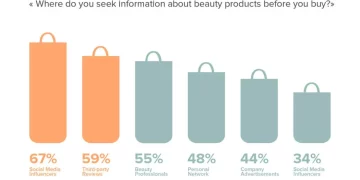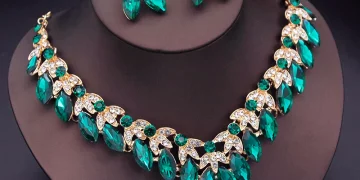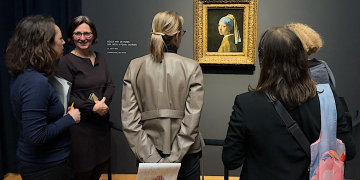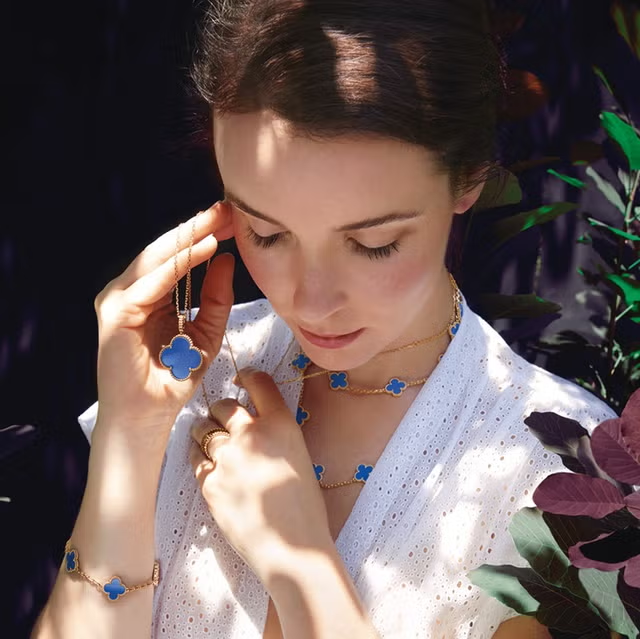International jewelry exhibitions are pivotal events in the world of luxury jewelry, offering brands an exclusive opportunity to showcase their collections, engage with collectors and potential buyers, and solidify their positions in a competitive market. These prestigious exhibitions not only serve as a platform for presenting fine jewelry but also play a crucial role in shaping the brand image and market positioning of participating jewelry houses. Whether it’s a well-established brand like Cartier or an emerging designer debuting at a global event, international exhibitions have the power to influence a brand’s perception, customer loyalty, and overall market presence.
In this article, we will explore how participating in international jewelry exhibitions can have a profound impact on brand image, market positioning, and the long-term growth prospects of a jewelry brand. We will also discuss the strategies that brands employ to leverage these events for maximum exposure and visibility.
1. Enhancing Brand Visibility and Prestige
One of the most immediate effects of participating in a prominent international jewelry exhibition is the boost in visibility and prestige that comes with being featured at such a high-profile event. Major exhibitions like Baselworld, The Hong Kong Jewellery & Gem Fair, and The Couture Show are known for attracting the world’s top jewelry houses, collectors, investors, and industry professionals. Being part of these prestigious events elevates a brand’s status and reputation within the industry and among consumers.
A. Association with Luxury and Exclusivity
Exhibiting at international jewelry events offers brands the opportunity to associate themselves with luxury, refinement, and exclusivity. High-end brands, such as Tiffany & Co., Bulgari, and Van Cleef & Arpels, use these platforms not only to showcase their most recent collections but also to reinforce their long-standing legacy of craftsmanship and luxury. This association with established, elite events helps further cement their brand image as symbols of high-status and exclusivity.
For emerging designers or newer brands, participating in international exhibitions can provide similar exposure, placing them in the same physical space as some of the most recognized names in the industry. The opportunity to showcase unique collections in such an environment positions the brand as a serious player in the market, potentially elevating its status and attracting attention from high-net-worth individuals, collectors, and luxury buyers.
B. Immediate Global Attention
At international exhibitions, brands often receive global media coverage, with journalists, influencers, and photographers documenting the event. This coverage provides an immediate boost to brand visibility, placing it in front of a global audience. This international exposure can attract new customers, boost sales, and raise the profile of the brand among industry insiders. Many jewelry brands utilize these events to debut new collections, ensuring their latest designs receive maximum attention and generate buzz across the world’s most influential media outlets.
2. Shaping Market Positioning and Brand Identity
International jewelry exhibitions play an essential role in helping brands define their market positioning. By showcasing their designs and collections in a highly curated and selective environment, brands have the opportunity to make a clear statement about who they are, the values they represent, and the target audience they wish to attract.
A. Creating a Clear Brand Narrative
Exhibitions provide jewelry houses with a unique opportunity to tell their story to a global audience. Whether it’s through the design philosophy, the use of rare gemstones, or the craftsmanship behind each piece, exhibitions allow brands to present their narrative in a way that resonates with consumers and collectors. Brands can use exhibitions to demonstrate how they embody specific values such as innovation, sustainability, heritage, or artistic excellence, helping to solidify their identity in the minds of potential customers.
For example, Chopard has consistently used its presence at international exhibitions to highlight its commitment to sustainable luxury, showcasing pieces made with ethically sourced diamonds and sustainable gold. This commitment to sustainability is a key element of its brand identity and market positioning. By emphasizing these values at exhibitions, the brand appeals to conscious consumers who are seeking more responsible luxury.
B. Targeting the Right Demographics
International jewelry exhibitions allow brands to target specific market segments by tailoring their presentations to the right demographic. For example, a brand may choose to highlight its high jewelry pieces at a prestigious event like Baselworld, while showcasing more affordable luxury lines at another event targeting younger consumers or first-time buyers.
These exhibitions provide an excellent opportunity for brands to make strategic decisions about market segmentation, ensuring they are positioning their pieces correctly to appeal to the right audience—whether it’s the ultra-wealthy, investors, or younger, trend-conscious buyers. The exhibition environment also gives brands a chance to gauge consumer response to new designs and adjust their future product lines based on feedback from a wide range of attendees.
3. Building Customer Relationships and Loyalty
Participating in international exhibitions provides jewelry brands with an excellent platform to build strong customer relationships. These events are not just about showcasing products; they are also about engaging with potential customers and establishing a personal connection with them.
A. Personal Interactions and Customer Engagement
At exhibitions, brands often create interactive experiences that allow attendees to interact directly with designers, craftspeople, and brand ambassadors. This personal engagement gives potential customers a chance to ask questions, discuss design ideas, and learn about the story behind each piece. These interactions help build a sense of trust and loyalty, making customers feel more emotionally connected to the brand.
For example, high-end brands often offer private viewings or VIP appointments, where top clients can receive personalized tours of collections and receive in-depth explanations about the craftsmanship and materials used in the pieces. This level of customer engagement fosters brand loyalty, making clients more likely to make future purchases.
B. Creating an Experience Beyond the Product
Exhibitions are an opportunity for brands to create a memorable brand experience that extends beyond the product itself. By investing in unique displays, interactive installations, and immersive storytelling, jewelry brands can create lasting impressions that help solidify their market positioning. This emotional engagement with customers strengthens brand identity and increases the likelihood of repeat business.
Brands may also use these events to announce exclusive memberships, loyalty programs, or special collections, which further encourage ongoing customer relationships. These efforts help to cultivate a sense of belonging and exclusivity, making customers feel like they are part of a special luxury community.

4. Opportunities for Networking and Strategic Partnerships
International jewelry exhibitions are prime venues for establishing connections and fostering strategic partnerships. These events bring together key players in the jewelry industry, from designers and manufacturers to suppliers and distributors, creating ample networking opportunities.
A. Collaborations with Other Brands
For jewelry brands, participating in international exhibitions can open the door to collaborative projects with other luxury brands or artists. Such collaborations can further elevate a brand’s reputation, position it within new markets, and expose it to entirely new customer bases. For example, Cartier has famously collaborated with fashion houses and artists to create limited-edition collections, resulting in heightened visibility and exclusivity.
B. Expanding Distribution Channels
International exhibitions also serve as meeting grounds for potential retail partners and distributors. By showcasing collections at a prominent exhibition, jewelry brands have the chance to attract wholesale buyers and retailers from around the world. This exposure can lead to expanded distribution and entry into new markets, especially in regions where the brand may not yet have a strong presence.
5. Market Feedback and Insights for Future Strategy
International jewelry exhibitions offer brands invaluable market feedback and consumer insights. Brands can gauge the reception of their collections through direct interactions with visitors, allowing them to assess what works and what doesn’t.
A. Testing New Collections
Exhibitions provide an opportunity to test market demand for new products, helping brands identify which pieces resonate most with consumers. Whether it’s a bold new design or a limited-edition piece, exhibitions allow brands to gauge the level of interest before committing to large-scale production.
B. Identifying Emerging Trends
By observing the latest trends and consumer preferences at these events, brands can fine-tune their designs and marketing strategies for the future. These insights are crucial for staying competitive in the ever-evolving luxury jewelry market.
Conclusion: The Strategic Value of International Jewelry Exhibitions
International jewelry exhibitions offer jewelry brands a highly strategic platform to boost their brand image, refine their market positioning, and build lasting customer relationships. The exposure, credibility, and networking opportunities provided by these events are invaluable in shaping a brand’s reputation and securing its position in the luxury market. Whether it’s about reinforcing luxury status, showcasing innovation, or building consumer trust, international exhibitions provide a powerful way for jewelry brands to elevate their presence and expand their influence on a global scale.
















































